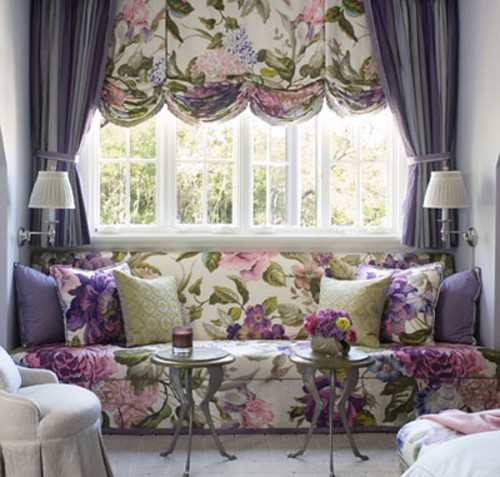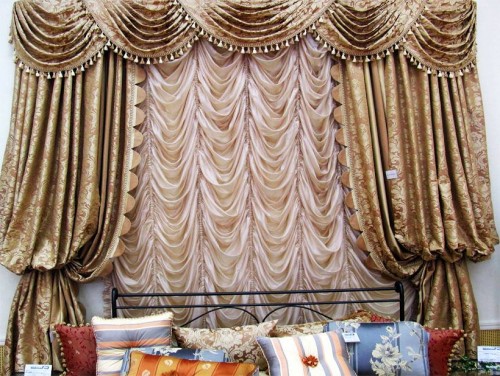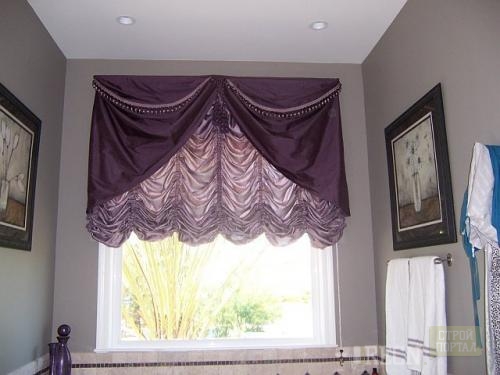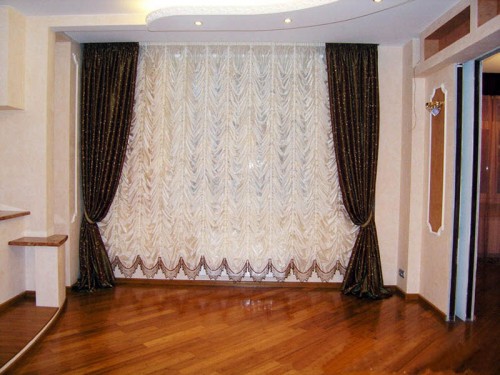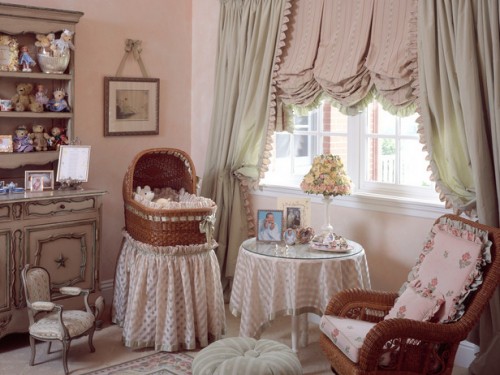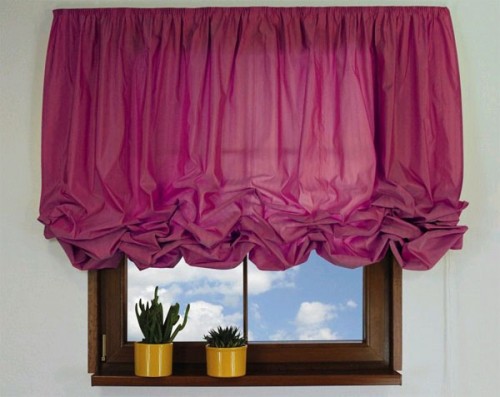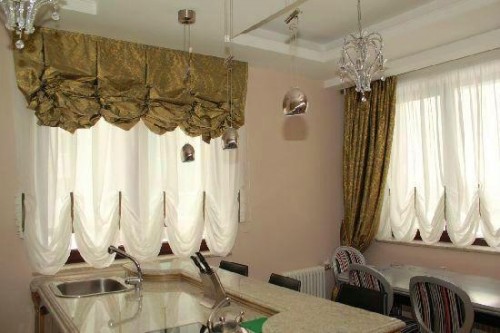
French curtains do it yourself Window
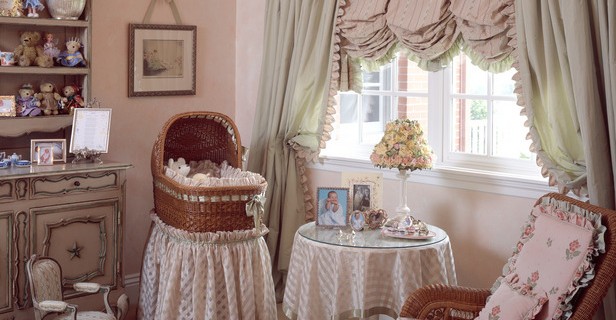
The French curtains ("Marquises") obtained their name through their cooled decorativeness with abundance of folds. This style decoration style appeared in the XVIII century in France at the court of King Louis XIV. Such curtains in the form of lush drapes with numerous horizontal folds made by rows will decorate a spacious living room or a bedroom in a romantic style, perfectly fit into the interiors in the classic style, as well as in retro style.
Content
Technically, the manufacture of French curtains is the drapery of the fabric in the form of wave-like folds, with further fixing them with the threads or cords. Such a curtain can be lifting, that is, climb up using a special system. As the cloth rises, the fabric is draped into numerous wave-like folds, giving the curtain volume and pomp. The length of the marquise can be different - both falling to the floor and shortened to the windowsill (this option is perfect for the kitchen).
This type of curtain is performed perfectly complemented by classic porters, equipped with brushes and lambrequins.
Types of fasteners
There are two ways of fastening French curtains:
- On ordinary curtains for curtains (round, rail, string, forged, as well as baguette). This method is suitable for either a direct either an aircraft form. The mount is carried out with the help of clamps, hooks, or by the product of the cornice barbell through the braid, sewn from above to the curtain.
- On profile eaves with a lifting mechanism - lifted up using a manual control cord system either using an electrical lifting mechanism (mounted in the eaves and remote control - either the buttons placed in any convenient place). Electric control is very convenient if several kits of the French curtains on different windows are waved in the room, or if they are placed in hard-to-reach places. The lifting mechanism can be placed under the cornice profile or be built-in profile. The curtain is attached to the lifting cornice using Velcro tape with adhesive base.
The fastening of the French curtains lift is suitable for windows of almost any shape (rectangular, beveled, arched, etc.).
Fabric selection
What to sew a French chart? Different selection options are possible - sufficiently dense heavy materials are suitable, and lightweight tulle fabric. The main thing is that the material is well amenable to drapery. The appearance of the folds of the curtains will depend on the density and texture of the fabric. When using a dense soft tissue with drapes, you can get dropwise waves - and on the contrary, the lighter and tougher there will be tissue, the stroll will turn out. Curtains from pastel shades fabric will look great in the bedroom. The French curtains in the kitchen are made in a shortened one-sided version - a translucent, not too abundant draped, lightweight fabric - for example, organza.
Fabrics with a pattern should be selected carefully, as it can "smear" and get lost - either on the contrary, to be fused in the abundance of folds.
The classic version of the French curtains is made of light thin fabrics, with a smooth texture, often with a shiny surface - atlas, silk, tulle, organza, chiffon.
The appropriate will be the one-picture version either with a non-latch pattern in the form of vegetable, vintage ornaments, monograms. Color marquises will create a pretty and romantic atmosphere.
Calculation of the French curtains
To create waves and drapets, you will need a sufficiently large amount of fabric. When sewing the traditional curtains, its width is calculated, based on the width of the window opening, as well as the length of the eaves. In the case of French Curtains, the assembly coefficient will be equal to at least 1.8 in the width of the tissue.
It is necessary to take into account the length of the eaves, the bumps on the seams of 5 cm on each side, and the assembly can be formulated from the rest of the material. The consumption of material for the length of the French curtains can be calculated, based on the desired length of the finished product, multiplied by two, with the addition of stacks on the seams (3 cm for the treatment of the vertex and 5 cm for the treatment of Niza).
On the windows of the big size will be good to look good sections of folds, on narrow and high - small and soft waves.
The number of festers depending on the width of the curtains can be calculated on the table:
French curtains do it yourself
Pattern of french curtains
There is a wide selection of curtain sewing services. Having studied information on the varieties of products and nuances of the choice of fabric and style, many women will be interested in how to sewing French curtains with their own hands. We will try to get the master class of sewing French curtains together to understand the technology of sewing Marks and apply the knowledge gained in practice.
Initially, it will be necessary to make a decactivation (to carry out tissue treatment in order to eliminate the subsequent shrinkage). To do this, you should soak it in warm water for 10-15 minutes, and after well squeeze and dry, or move with the sweeping function.
The further sewing process can be divided into steps:
- Processing on the sides and bottom of the curtains. It is necessary to decompose the tissue on the working surface - for example, on the floor. On the sides of the curtains you need to make two folds of 1-1.5 cm width and sunmove them.
- The lower part of the curtain is processed as follows: two times we sweep 2 cm and cake.
- Mark the scenes. To do this, we make the marking of the tissue in width using a ruler - at an equal interval (40-50 cm).
- We form a row with the help of tissue cuts. For this, we sew a 3 cm width of 3 cm on the lines, bent into the sides.
- The height of the French curtains must be adjusted using cords, which have been crushing.
You can also form drapery using the rings sewn up every 20 cm, or use the narrow drapery ribbon to drape in height.
The cords are tested in the serea or braid, adjusting the height of the curtains and puffs of the folds. At the top of the web, we sew a solid tape for attaching curtains on the cornice. Next, secure the finished product on the eaves, fix on the sides, adjust the line of the Niza curtains and admire the result.
Photo of french curtains:
French curtains do it yourself, video:





